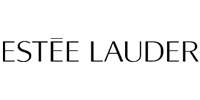Estee Lauder aims to transform the beauty industry landscape with their customer service by providing modern training and understanding of the products with (digital solutions) to its teams.
We helped Estee Lauder reduce 30% cost in classroom training
Here’s how we helped them reduce 30% cost in classroom training while also able to track ROI from the learning and training initiatives.

The Goals
The key goals of the projects were:
- Build a scalable and engaging knowledge repository of resources
- In multiple languages
- While also providing analytical service to understand the user performance
Requirement
The LMS was built in a decoupled architecture since it was required to have multiple types of content (text, videos, audios, quiz, pdf) in different languages with a scalable backend and a creative UI.
Drupal was chosen as the data repository because of its ability to scale the support to content-rich sites and experiences. React for its ability to efficiently update and render components across different channels (web, mobile apps, and chatbot/VoiceBots) with interactive UIs.
The learning management platform would curate all resources eliminating the need to conduct periodic classroom sessions to train its people or repeat a session across different locations. Since the platform would be available both online and offline, the learning is no longer restricted to a particular time slot or place.
The resources are available on both web and mobile platforms, giving people the flexibility to learn on the go.
This gave people the freedom to learn at their convenience, and hence the solution was better adopted by them.
Monitor the performance of the courses and videos using interactive reporting system via xAPI.
This helps in understanding how the team members are faring with the learning process while also learning the needs across geographies.
By tracking the learning actions, the brand could analyze how people are interacting with the learning resources and apart from knowing how the users are faring, we are able to also track if a learning r resource is being useful or not.
For tracking the progress, the information was passed to the LRS (Learning Record Store) which transformed the data into reports.
- A fast and scalable backend system with an interactive frontend (decoupled LMS)
- To build an engaging (learning) platform
- Analyze user’s performance
Process
The core enterprise LMS was developed in Drupal 8 which would provide users with an organized knowledge repository, easily accessible through different devices. Since the courses covered different types of content, it was imperative to ensure the site doesn’t slow down.
Therefore the backend was split from a monolithic application into smaller pieces to ensure a fully automated deployment ecosystem while streamlining the overall application with faster speed.
The Lumen microservice framework was used to add additional functionalities to the platform. It specifically dealt with user activity data like points, favourite courses, bookmarks, badges, and leaderboards to make the course engaging.
Lumen’s features like caching, queue, validation, routing, middleware, and the service container ensured blazing fast APIs and LMS.
A faceted search application with React using declarative components was built and integrated the app inside the Drupal as a block or template page.
Outcome
Some of the prominent features in the LMS used, were:
- Varying (Multilingual) content for different regions and brands
- Personal dashboards for users to track their progress, scores, rewards
- Complete repository of all products, bestseller lists
- The Drupal LMS is also linked to the client’s internal personnel management systems and used data from there to map individual learning progress.
5 of the company’s brands have already moved on to the new platform, reducing the need for separate LMSs and providing a more integrated learning system. Others are migrating.
ELC has seen a 30% reduction in classroom training and associated cost.
The beauty advisors’ engagement levels with the learning resources have risen considerably.
The platform is completely reusable and can be easily rolled out for all of the client’s brands, and different markets, with content structured specifically for each market.




